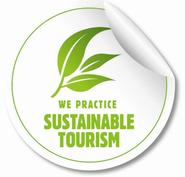 Over the course of this semester I have learned a lot about travel and communication. Most of it are things I had never thought about before, but will now probably use for the rest of my life.
The most influential concept I learned about in this class is sustainable tourism. In order to keep tourism an ongoing option for vacations, we need take certain steps to insure the quality of the sites and the communities we visit do not diminish. This is where sustainable tourism comes into play. Steps should be taken by the traveler and the local business or site to make sure the surrounding area is affected as little as possible.
As a traveler we can take steps to support companies that are running off of a sustainable business model. To avoid false claims by the specific business, check lists compiled by an accredited organization. UNESCO is a great example of this. They hold destinations accountable to prove their sustainability, and to maintain that through a series of inspections. Another way we can be an educated traveler is by monitoring our interactions while on vacation. As previously stated in my blog, I am a huge advocate for the prevention of acculturation. This can be done by researching the norms and taboos of a culture before visiting them. By knowing these you can function within their society with making them feel like they are the odd one out.
Companies can contribute to sustainable tourism by following a few principles that we learned about in our sustainable tourism lecture. The most important is to use local resources. Not only does this include materials and locally grow food, but also employing native peoples. This promotes the growth of the local economy, and allows the natives to benefit from the exploitation of their land. Another principle of sustainability for a company is the preservation of the land. Companies proficient in this not only try to prevent this, but actively work to better it.
Another important skill I learned from this class is how to effectively communicate with a mass audience using the internet. Before this class I had never thought about changing my writing style depending on the audience I wanted to draw. I now understand that this is an important aspect of communication, and know several websites to test my wiring level. I also learned how to draw traffic to the source that I want communicated, and about adding key words and phrases to incorporate searches that individuals my use. I now know how to promote on other social media outlets (like pinterest) and hyperlink it back to my original source to broaden my target scope.
I found this class to be very informative and entertaining. I enjoyed the mix of traditional education and new communication methods, and hope this style of teaching is incorporated into more classes. The knowledge I've gained from this class is easily transferable into real life, which is what all classes should strive for.
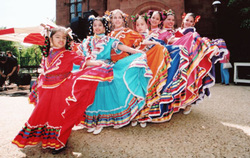 Los Quetzales Mexican Dance Ensemble. Imagine you finally saved up for that big trip you've been dying to go on. You've made all the travel and hotel arrangements, and have even planned out what sights you are going to visit. After a grueling flight, you land at your destination. After all this time you finally made it! On the drive to the hotel, you have an odd feeling of comfort that normally is designated to being surrounded by familiar things. You brush it off and check into your room. Later that night, you leave the hotel to check out your new surroundings. When you show up to the city center, it looks like any block you'd find in your home town. The food and entertainment are not unique, and the people act and dress just like you. Would it still be worth your time and money? This is an example of acculturation. It is a plague that is infecting and transforming the world into uniformity and solidarity, and it is up to us to prevent this disease from spreading. As travelers we need to be educated, appreciative, and open to all cultures of areas we intend to travel. Only through this can we hope to preserve different cultures, thus giving us a reason to travel in the first place. Part of sustaining culture comes from education. It is up to us to study the customs and taboos of the cultures we intend to visit. This keeps these differences the "norm" in the visited destination, and helps natives not feel like the odd one out in their own land. Another way we can help sustain our differences is by supporting establishments that focus on celebrating culture. By supporting these companies and sites we ensure that our tourist dollars go to the local economy, which in turn keeps these cultural celebrations continuing. Examples of these include: art galleries, museums, festivals, fairs, and historic sites. My final bit of advice to the savvy traveler is to be open. Part of the joy of traveling is putting yourself out there and trying new things. By doing this it turns foreign cultures from a spectacle into an experience, which is the only way to fully understand a differing life style. The good news is that it is not all doom and gloom. Recent statistics show that cultural tourism is on the rise. In 2002 it was estimated that 216.8 million people in the United States were participating in cultural tourism, which is up 13% from 1996. Another encouraging statistic is that 56% of Adult Americans say they include some form of historic, artistic, or humanitarian activity on their vacations. This shows that awareness is rising, and that the people are realizing that westernizing isn't as great as was once thought. This is a call to arms against the acculturation of the world. This isn't a problem that will work itself our or be corrected by local and foreign governments. It is a change that can only happen on the most basic level, with each of us. By being a sustainable tourist we can ensure that we have a reason to leave our hometown in the future, and keep it that way for generations to come. (Statistics were pulled from http://www.nasaa-arts.org/Research/Key-Topics/Creative-Economic-Development/Cultural-Visitor-Profile.php. For more statistics like these click here.)
Part of being a responsible traveler is supporting companies and destinations that follow certain guidelines that coincide with your values. Many sites clam they are "green" or support local cultures, but how do we know who truly cares about making a difference and who is just saying these things to increase profits. It is up to us (the responsible traveler) to research these questionable areas to find the truth. There are certain organizations that consolidate this information and do the research for us, so we don't have to. One of these organizations is UNESCO (United Nations Educational, Scientific, and Cultural Organization). On their website they provide a list of destinations that meet their standards on what it means to participate in sustainable tourism. They also contain a list of areas that are in danger of being removed from their list because of a lack of compliance. An example of this are the Ruins of Kilwa Kisiwani and Songo Mnara. These ruins were once two prominent ports located on islands off the Tanzanian coast. Between the 13th and 14th century anything that crossed the Indian Ocean ended up there at some point or another. Clip to modern times, and you have the mysterious ruins that once were a great city. Because of its historical value it has become a popular tourist destination, and eventually found itself on UNESCO's list. In 2004 UNESCO put it on its danger list because of the neglect of maintenance that the site had been receiving. The largest sign of neglect was the lack of preservation and protection of resources. The ruins have not had proper upkeep, allowing for vegetation to grow over this historic city. Encroaching ocean tides deteriorate the buildings from the outside and make them unsafe to visit. Another area they are lacking in is finding a fit between the community and tourism. Each year urban developments creep closer and closer, thus blurring the lines between public domain and protected lands, and increasing vandalism. An example of a location that abides by UNESCO's regulations, and incorporates into this blog's theme is the town of San Miguel de Allende. This town is found in the central part of Mexico, and is part of the Magic Villages of Mexico Program. San Miguel de Allende is a culturally and architecturally diverse town with plenty of rich history. It played a significant roll in Mexico's independence by being the first independent municipality in the country. San Miguel de Allende Has earned a place on UNESCO's list, and has remained there for many reasons. A few of these reasons are as follows: - Collaboration: The town has collabarated in many projects to upkeep the city and the Sanctuary. Many laws have been passed to aid this, thus showing the citizens willingness to protect their historical treasures.
- Finding the fit between community and tourism: The town has set up managment policies and plans to help preserve property values and the authenticity of the town. As part of this, any resterations or additions to the town are made to have the same unique style of archetecture that the city is known for.
- Make sites and programs come alive: Tours of the city are done by locals, who are passionate about the subject matter and truly care about the town.
- Focus on authenticity and quality: The town and Sanctuary have been subject to few significant changes over time, keeping it very authentic.
- Preserve and protect resources: The Sanctuary is in pristine condition because of the care given by the citizens of the town.
It is important to support companies and destinations that fit our ideals and beliefs. Luckily we have organizations like UNESCO to rely on to keep businesses compliant. For more information about UNESCO, or to see the full list of destinations click here.For a list of world heritage sites in danger click here.
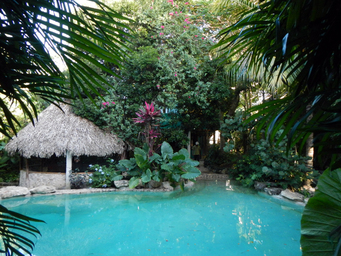 Part of being a culturally aware traveler is supporting those companies who promote sustainable tourism, and Genesis Retreat does just that. Tucked away in the jungles of the Yucatan Peninsula, about 2 hours from the Cancun Airport, is where you'll find this ecolodge. Genesis supports sustainable travel in many ways. The resort is staffed with local workers, which helps the local economy retain some of the incoming foreign capital. Chefs on the retreat cook local favorites and international classics using predominately local ingredients, most of which are grown on the retreat owned ranch a few miles away. Another appealing aspect of the retreat is the available ties to the local village. Genesis will set you up with a local family in the village of Ek Balam. While with your appointed family you will learn some of the customs and activities associated with their village, like making handmade tortillas and hammocks. While in the village you will have plenty of opportunities to support the locals. You can purchase items crafted by residents, eat at any of the town restaurants, or even rent bicycles to check out the local Mayan Ruins. With inexpensive room rates, you'll have plenty of cash to spend.
Genesis Retreat is an excellent example of the cornerstones for fair trade and responsible tourism. - Fair Working Conditions: Employees are hired locally, thus creating a way for the surrounding villages to earn money.
- Fair Prices: From what I found on reviews this was one of the cheaper hotels around, which is great for the Eco-traveler with a light wallet.
- Integration Into the Local Economy and Regional Development: Allows for community involvement and small business development by bringing in tourists to an area that probably would not be traveled very often.
- Fair Trade Partnerships Between All Actors in Tourism: The integration and cooperation of the village of Ek Balam promotes spending in the local village, and an appreciation for the local customs.
- Sustainable Resource Use and Environmental Justice: The lodge follows many conservation practices such as using natural water sources for its pool and locally grown foods for its meals.
The owner and operator of the Genesis Retreat said it best; “Low impact tourism is about supporting what already works for the people here instead of introducing wide-scale changes based on external cultural norms.” For more information, please visit the Genesis Retreat's website.
One of the driving points of this blog is to create awareness and education for travelers. Not only awareness of acculturation, but also information about how to travel conservatively using eco-conscious locations. Here are a few questions to ask when looking for accommodations or tour companies: 1. Is the company in question playing an active roll in the conservation of natural resources?
2. Does the company in question acknowledge, celebrates, and works to preserve local culture?
3. Does the company in question hire locals? (This is a great way to promote local economies).
4. Does the company in question work to educate about sustainability and other conservation efforts?
These are just a few of the many ways a company can be sustainable. For a more in-depth list, and a list of travel options check http://www.ecotourism.org/. Plan on traveling to Mexico? Here's a great company that is practicing ecotourism habits including: being a UNESCO World Heritage Site, complying with the guidelines of UNESCO's MAB (Man and the Biosphere), and following the principles of the National Commission of Protected Areas. Sian Ka'an is a Biosphere Reserve that was founded in 1986. It is located in Tulum, which is within the Mexican state of Quintana Roo. The reserve covers 1.3 million acres of protected land and ocean, making it the 3rd largest refuge in Mexico. They offer many kinds of tours, from snorkeling all the way to exploring Mayan Ruins. Sian Ka'an has been making great strides in minimizing their footprint and promoting the local economy. They keep tour groups to a maximum of 6 people to help keep environmental impacts low. They also have a tree planting program to help offset their carbon footprint. Beyond direct environmental benefits, Sian Ka'an also helps indirectly. They hire locally from surrounding fishing villages. Not only does this promote the local economy, but tourist benefit from guides who have a deep knowledge and passion for the surrounding area. Another way they help indirectly is by educating and involving the local school children in conservationefforts, because as they said on their website; “You can only conserve what you know and what you have learnt to care for." For more information visit their website here. Thanks for reading!
| Hola everybody!
I'm going to start by talking about The Programa Pueblos Mágicos ("Magical Villages Program"). This program was started in 2001 by the Mexican government. It was created to help promote traveling to the rural areas of Mexico, and not just the beaches and resort towns. The program currently consists of 83 towns within 31 states, and is still being promoted by the government. Towns who are awarded this title win much needed funds to improve their city. They also bring in outside capital from tourists all around the world. Sounds all good right? Well, one negative affect this program is the erosion and degradation of the native culture through constant exposure to Westernized culture. Acculturation is a global plague that is spreading rapidly across this earth. A wise teacher once told me that 14 languages die every day, and with them dies the culture that once made them unique. It is our duty as global travelers to do all we can to protect this dying diversity, so we still have a reason to travel. We may not be able to prevent exposure (nor do we have the right to), but we can help preserve our differences by respecting and honoring theirs. | |
|

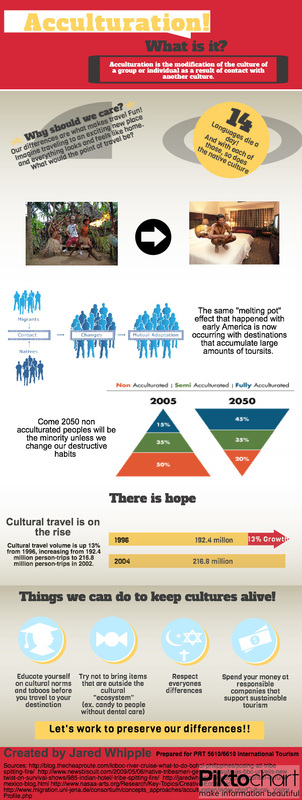

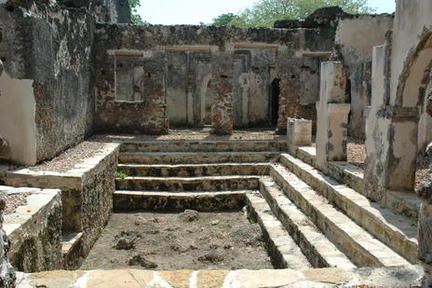
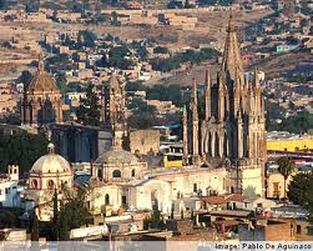

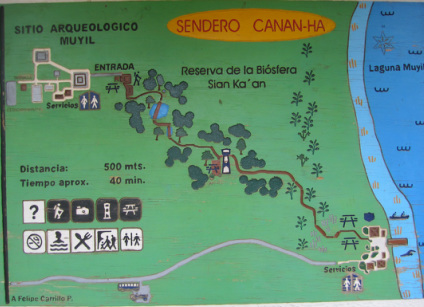
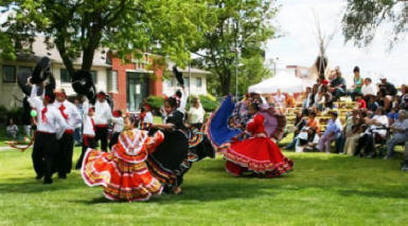
 RSS Feed
RSS Feed